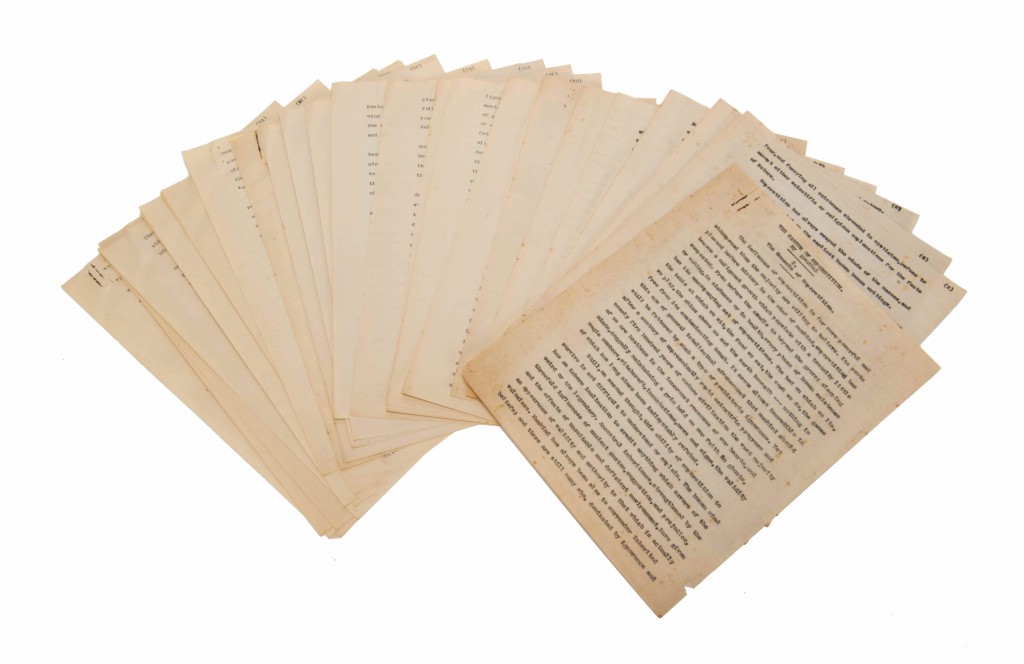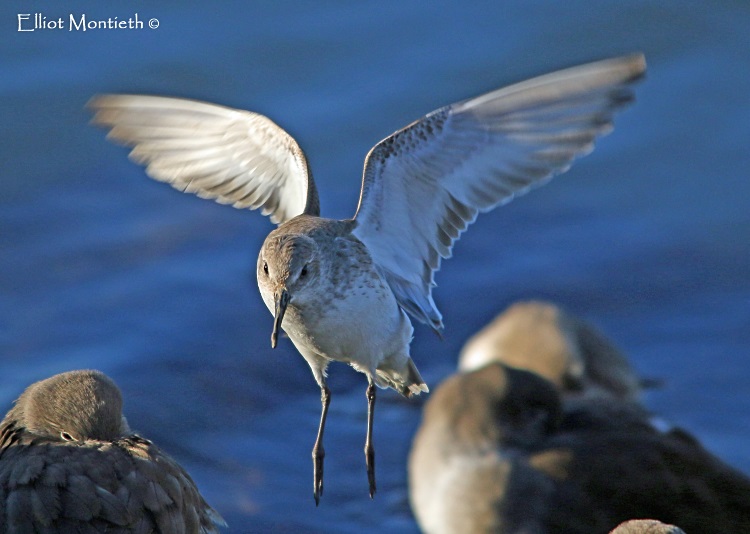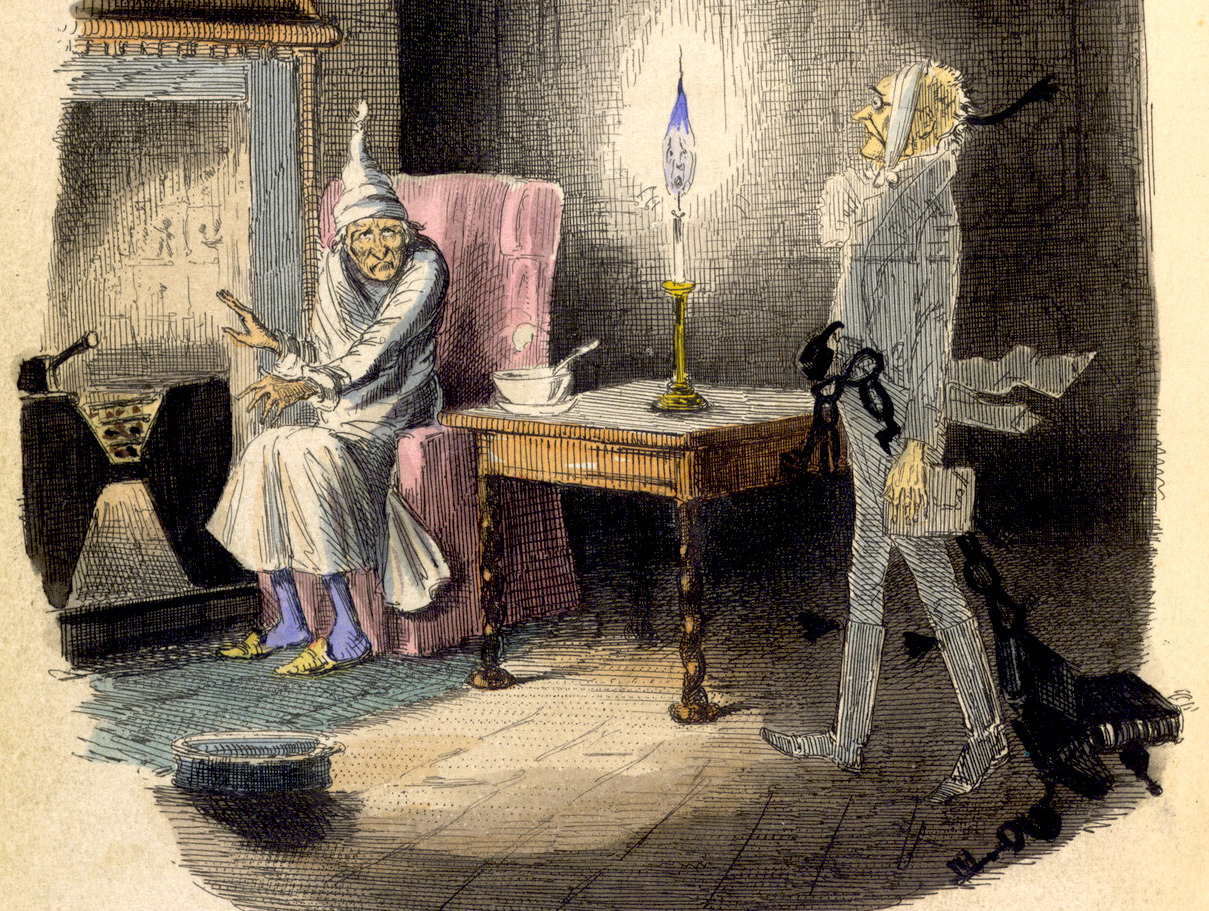“May your coming year be filled with magic and dreams and good madness. I hope you read some fine books and kiss someone who thinks you’re wonderful, and don’t forget to make some art – write or draw or build or sing or live as only you can. And I hope, somewhere in the next year, you surprise yourself.” -Neil Gaiman
Saturday 31 December 2016
Paulo Coelho
Words of Wisdom: Listen to Your Heart
“Listen to your heart. It knows all things, because it came from the Soul of the World, and it will one day return there.”
- Paulo Coelho
WORLD’S LARGEST WILLIAM BLAKE GALLERY TO OPEN IN SAN FRANCISCO
John Windle Antiquarian Bookseller announces the grand opening of The William Blake Gallery, a new exhibition space in San Francisco dedicated to works created by the massively influential 19th century poet, artist, and engraver. The gallery is the largest of its kind devoted solely to the artist, as well as the largest collection in the world of pieces by Blake available for purchase.
Widely considered to be one of the greatest contributors to the Western world of literature and art, William Blake’s lifetime of otherworldly work was motivated by mystic visions and spiritual revelations. Creating hundreds of artworks from engraved illustrations and illuminated books to original writings and watercolors his deeply unique style remains endlessly enigmatic and highly sought after. Favored by an eclectic groups of fans and collectors, Blake remains one of the only seminal Romantic artists whose work is still occasionally available to collect.
After 50 years in the book trade and 43 years operating John Windle Antiquarian Bookseller, longtime rare book dealer, John Windle, will open a gallery with his retrospective of the artist in October, 2016, within San Francisco’s historic 49 Geary building. The first physical space exclusively dedicated to Blake’s work in over two hundred years, The William Blake Gallery will house hundreds of original Blake pieces alongside thousands of reproductions of the artist’s own writings and artwork, most notably:
● Illustrations to Dante’s Inferno, Earliest known proof set, Seven plates and oblong folio, printed on laid paper
● The Complaint of Job, 1785, Monochrome wash drawing
● Songs of Innocence: “Holy Thursday”, 1789, Single sheet, printed in black, matted
● Plates from the final lifetime printing of The Gates of Paradise
● The Virgin Hushing, 1799, Tempera on paper
Of the decision to open a gallery of William Blake’s works, John Windle remarks: “I must be stark raving mad. Like Blake.”
Image: William Blake. Blake’s Illustrations of Dante. Plate 1: “The Circle of the Lustful: Paolo and Francesca” US: 1954 Large folio, fine, clear uniform impression on handmade paper with no watermark, inscribed in pencil by Lessing Rosenwald
FOUND: LOVECRAFT-HOUDINI MANUSCRIPT
Whispered about by hopeful collectors and scholars for decades, the manuscript of H.P. Lovecraft’s The Cancer of Superstition, commissioned and co-written by magician Harry Houdini, has finally come to light. It was rather incredibly “discovered by a private collector among the records of a now-defunct magic shop,” according to Chicago’s Potter & Potter Auctions, which will auction the 31-page typewritten story on April 9.

In the manuscript, the sci-fi master and the magician delve into ancient and modern superstitions, writing about werewolves, cannibals, and black magic, and advancing a “primitivist theory of the development of superstition.” The proposed book-length project came to a halt when Houdini unexpectedly died in 1926 at the age of 52. Prior to this discovery, only an outline and part of a first chapter were known to exist.
Potter & Potter will open the bidding at $13,000, although it is estimated to make $25,000-40,000.
The two-part auction of Houdiniana and the Davenport Magic Collection will also feature personal scrapbooks annotated by Houdini, rare photos and posters of him, handcuffs, keys, autographs, lock picks, and original film footage. An archive of early correspondence to Houdini from the vaudeville impresario Martin Beck, who helped transform Houdini into the “Handcuff King,” is another highlight.
Image Courtesy of Potter & Potter Auctions.
Image Courtesy of Potter & Potter Auctions.
You
Words of Wisdom: Return
“If you feel lost, disappointed, hesitant, or weak, return to yourself, to who you are, here and now and when you get there, you will discover yourself, like a lotus flower in full bloom, even in a muddy pond, beautiful and strong.”
- Masaru Emoto, The Secret Life of Water
[Image: Wish by Christian Schloe. Visit this talented artist at: https://society6.com/christianschloe.]
Friday 30 December 2016
Wednesday 28 December 2016
As ever it was
Is it as it ever was, does the present share the past
Has the fact or maybe sometime fiction, survived us to the last
Has the fact or maybe sometime fiction, survived us to the last
If we've been here before, and life is preordained to haunt
Do the everdreams of everynight, flaunt apparitions sent to taunt
Do the everdreams of everynight, flaunt apparitions sent to taunt
Shit and silent prophesy happens on every plain,
As does the reward of untold truths of benison and bane
As does the reward of untold truths of benison and bane
Survival in conception, the fruition of fertile seed
Set in fronds of fantasy, and good and evil deed
Set in fronds of fantasy, and good and evil deed
Passage of time and circumstance, pave roads with obstructs and of gold
Prayer falls to silent ears, destroying wonders once to have and to hold
Prayer falls to silent ears, destroying wonders once to have and to hold
Shattered, dreams of travesty, insecurities the human failings
Angels in a nightmares dream, try to deny liberties pointless slaying
Angels in a nightmares dream, try to deny liberties pointless slaying
Dress it up as was before, in majestic rags of false renown
Life's harvest dressed in vanity and fortunes gowns
Life's harvest dressed in vanity and fortunes gowns
The Dee Estuary

Dunlin by West Kirby Marine Lake, December 28th © Elliot Monteith

Brent Geese on Thurstaston Shore, December 27th © Tanny Robinson

Parkgate Promenade, December 27th
Main article: Dee Estuary
Beyond Connah's Quay the river opens out into the Dee Estuary, forming the northeasternmost section of the North Wales coast and the western coast of the Wirral. Towns along the coast include Flint, Holywell and Mostyn on the Welsh side and Neston, Parkgate, Heswall, West Kirby and Hoylake on the Wirral side. South of Bagillt and Parkgate the Dee Estuary forms the boundary between the local authority areas of Flintshire and Cheshire West and Chester. Northwards it forms the boundary with the Metropolitan Borough of Wirral in Merseyside, North West England. The estuary continues to widen until finally entering the Irish Sea and Liverpool Bay between the northernmost point of mainland Wales, Point of Ayr at Talacre, Flintshire and Hilbre Point, near Hoylake and West Kirby in Wirral, Merseyside. Hilbre Island, part of Wirral, straddles the mouth of the estuary at this point. The waters of the Dee then converge with those of the River Mersey and Ribble, producing a notable drop in salinity and increase in sediment which can be tracked a considerable distance along the Sefton and Lancashire coasts.
The estuary is hugely important for birdlife and has been designated both as an SSSI and as a Ramsar site accordingly. Its value lies in the huge expanses of mud which are exposed between tides and the extensive saltmarsh developed on both sides but principally on the right bank north and south of Neston.
The estuary owes its origins to the scouring of a broad channel through the Triassic sandstones and Carboniferous mudstones by glacial ice during successive ice ages to form an iceway. The channel continues inland south of Chester but its higher reaches have long since been infilled with sand, gravel and mud. The process of infilling by mud continues to the present day as the rapid growth of the saltmarsh in the last century testifies, pushing the high tide line further out into the estuary.
A Poem for everyone who’s “Too Fat, Too Tall, Too Gay or Too Feminine.” Via Banshee Beauty Boois
Love in a Time of Drought.
Give yourself the freedom to learn, to love, to grow, to know.
Better when people tell you that you aren’t good enough.
“Too fat, too tall, too gay, too feminine.” They say
“too short, too masculine, too skinny, too loud.”
Stop and choose to look within yourself;
For a glance in the mirror to reveal the truth:
Reflections of love staring back at you, through your own eyes.
Allow yourself to forget the lies and realize the god within yourself.
Master of your universe, made in god’s image,
Clothe yourself in more than just jewels and gold,
But in the knowing that you are wholly your own,
Slowly learning to un-learn the self-hate.
You sit in stillness daily;
Praying;
Chanting mantras;
Contemplating;
Making yoga moves;
Redefining all the rules
So that the healing of your soul becomes the ultimate life goal!
Freeing yourself from a shrunken, hidden and melancholy soul.
For the rain fell and you see that the sky went pale, just for you.
The clouds impregnated by the heat radiating from your dimmed glow,
Who gave birth to the rain sent down from the heavens to kiss and caress a heart broken.
Placed in the hands of a world filled with f*ck boys
and girls who parade down “hell is life'” lane
and magazines that body shame
and news channels that only spread hate.
Pause! And choose to listen to the rain as it washes always all your pain, flowing down your window pane.
Bringing with it love that flows into rivers,
Reborn into the seas,
who will no doubt rise again, just as you do every morning
Cloaked in freedom, beauty, truth and love.
Love that abides by and defies gravity simultaneously,
Love that falls for you like the rain,
Love that not only rises but also shines for you like the sun.
Love that never forgets to acknowledge or wave at your majestic presence like the sea.
Love that bows before you and kisses your feet like the soil.
Love that blooms at your touch,
Like the flowers awaiting and awakening to your bloom
As you enlighten to your true nature in the knowing that
the love that you’ve longed and thirsted for has returned to your desert being
Just like rain in a time of drought.
~
Author: Banshee Beauty Boois
Image: wudaokou / Deviantart
Editor: Sara Kärpänen
Monday 26 December 2016
Ghosts on the Nog
The great English tradition of Christmas ghost stories.
I’ve long thought of Christmastime as a season of mostly pleasant intrusions: thirty or so days of remembering to tend, checklist style, to the latest pressing bit of Yuletide business that comes racing back to you. The well wishes. The trip to the Home Depot. The seasonal ales.
This is the Fezziwig side of Christmas, that portion that makes you look up the word wassail when you encounter it and think, Ah, that would be fun. But what of the darker elements of Christmas—and what of Christmas for those people who enjoy making merry most years but may have hit upon a bit of a tricky patch? What succor of the season might they find at the proverbial inn?
Having experienced both sides of Christmas, there is but one constant I am aware of that serves you well both in the merriest of times and in the darkest: the classic English Christmas ghost story. You’d think Halloween would be the holiday that elicits the best macabre stories, but you’re going to want to check that opinion and get more on the Snow Miser side of the equation. Time was the English loved to scare you out of your mind come December, but in a fun way that resulted in stories well afield of your typical ghost story outing.
If you’re into ghost stories, you probably know that M. R. James is held as the master by most. His thing was to write a tale for Christmas, invite some of his fellow Eton dons and favored students into his rooms, and read it over candlelight after everyone had been plied with eggnog. Readings for the season—but not really of the season. There’s not a lot of actual Christmas in James’s stories.
Writers of ghost stories, James included, love to make authoritative lists about what makes such stories work. They offer spectral prescriptions that, as you might gather, rarely hit upon the same guidelines, and then they tend to violate these notions within their own work. But I like the spirit of that endeavor—a naughty/nice list for the spooky crowd—and as someone who devours Christmas ghost stories in the happiest of years and who turns to them, too, at those Christmases when the glimpsed mistletoe kisses of new lovers are akin to sprigs of holly jabbed through the temple, I have some ideas on what you want when it’s time to settle in with your eggnog, dim the lights, and turn some pages.
The first key to a Christmas ghost story is a convivial atmosphere. People in these stories are well fed, they’re often hanging out in groups, you feel like you’re hanging out with them, and you do not wish to leave any more than they do. It is cold outside but warm in here, and it’s time to rediscover that sense of play that so many of us adults lose over the years, and which, when we are fortunate, we remember to rediscover at Christmas.
Next, a game might be proposed, say, a game of telling stories. Then comes the terror. The status quo is infused with a sensation of something being a touch off, chuckles give way to shared, uneasy glances that maybe this isn’t all merrymaking. But this isn’t the terror of Lovecraft or of impending doom or the horror that indicts our fundamentally base natures. It’s a rather more pleasing terror—the ghosts, even when they mean to avenge themselves upon us, also seem to have dipped into the nog a time or two, with their own playfulness in evidence. Sure, they can kill you, but they do so with a joke or two at the ready. These are the short days of the year, and a weird admixture of pagan habits and grand religiosity obtains. There is also booze. People didn’t have TVs: people drank, people got to telling tales, someone told a tale and someone tried to tell a bigger one, and then, lo, we got a whole ghost story Christmas tradition.
But even if you’re into this stuff, there’s a decent chance you’ve not read any of these oft-overlooked Christmas baubles, stories which have always made me grateful for their company, blending themselves to my mood and needs and wishes in ways that nothing else quite has. They’re also dead good fun. So ladle out some perry or mead—or just grab a Bud Light—and allow me to recommend these ghostly tidings.
“Between the Lights,” by E. F. Benson (1912)
This tale is set on Christmas Eve and looks back on the one the year before, when our host had a vision of primal, shack-entombed beasts advancing upon him as he sat out on the lawn and watched his wife and a good friend play croquet. The creatures advance, paralysis has set in, and it is by a Christmas mercy that the hold is relinquished. Daytime haunts can seem even less natural than the midnight variety, and this one proves portentous when the vision is actualized, after a fashion, before we all collectively shudder and call for more mulled cider, the tale complete.
“The Kit-Bag,” by Algernon Blackwood (1908)
We’ve all been in the position of racing off for the Christmas holiday, fretting that we’ve forgotten to pack something. In this story, a law clerk—whose boss just cleared a murderer—is packing what he believes to be the travel bag said employer has lent him. But the holidays can be misleading, and one man’s Tumi luggage can be another’s sack to lug around a severed head in. Again, there’s that notion of warmth, of looking forward to things—our man wishes to chat up the ladies back in the lodge on his ski holiday—and affability. You want this guy to be okay. Alas, he’s ripped open from stem to stern and bleeds out as the clock chimes in Christmas. Only kidding, dear reader. A very good thing about a great Christmas ghost story is that you will be frightened, but the new people you have come to care about tend to live to see another Christmas.
“A Strange Christmas Game,” by J. H. Riddell (1863)
Even spook-story enthusiasts tend not to know that a goodly amount of Victorian ghost fiction was written by women. Maybe the majority of it. Mrs. J. H. Riddell was one of the best ghost story writers of her time—period—and in “A Strange Christmas Game” we have that idea of play again, only now it is the ghosts who are trying their hands at sport. Cards, as it were. A brother and sister have recently taken possession of a house willed to them, and the demise of their benefactor plays out like some horrible, woebegone mummer’s act.
“Christmas Re-union,” by Sir Andrew Caldecott (1912)
This one comes from a volume called Not Exactly Ghosts, an apt summation of Caldecott’s approach—the things in his story could kind of happen on their own. Again, we begin at a family holiday party, but there’s a guest who’s a prick. Everyone is pleased when he leaves, and wouldn’t you know it? He heads out at the same time as Santa Claus, or rather, the Santa the family thinks it hired to put on an act for the kiddies. The prickish guest, we learn, did his uncle a bad turn once upon a time, and this Father Christmas knows about it—worse still, he’s an avenging Father Christmas. Santa is the ghost in this story, maybe, or not. Because Santa could just be pissed-off kin. You get to riddle it out for yourself.
“Smee,” by A. M. Burrage (1931)
My personal favorite. At this party, we’re playing a form of hide-and-seek in which the seeker advances upon the hider and says, “It’s me,” which, uttered quickly and breathlessly enough, becomes smee. It’s Christmas Eve, this is a big old rambling house, but one tiny problem: there’s an extra player who does not number among the guests. A sort of moral: downing the nog and playing hide-and-seek can make you want to pull a Scrooge. Reading this story—like drinking too much nog—would be enough to have you cancel Christmas next year. If only it wasn’t so much fun to get messed up on the stuff.
Colin Fleming writes for Rolling Stone, The Atlantic, and the Boston Globe. He is a regular contributor to NPR’s Weekend Edition and Newstalk Ireland’s The Tom Dunne Show. He is working on a memoir, I Am Not Like You: A Broken Man’s Attempt to Write His Way Out of Hell One Story, Book, Deadline, and Note-to-Self at a Time, and a Beatles book, Same Band You’ve Never Known. His next book, The Anglerfish Comedy Troupe: Stories from the Abyss, comes out in August.
Sunday 25 December 2016
Mary’s royal cherry trifle
Ingredients
- 450g cherry , reserve a few lovely cherries for the top and stone the rest
- 340g jar cherry jam or conserve
- 450g Madeira cake, cut int 1cm-thick slices
- 100ml kirsch or cherry brandy
- 10 ratafia biscuit or 5 amaretti biscuits, broken
- 300ml double cream, whipped lightly
For the custard
- 50g caster sugar
- 50g cornflour
- 1 tsp vanilla extract
- 2 large egg, plus 1 egg yolk
- 300ml milk
- 300ml whipping cream
Method
- First, make the custard. Tip the caster sugar, cornflour and vanilla into a mixing bowl and add the eggs and egg yolk. Whisk with a hand whisk until smooth and blended.
- Pour the milk and double cream into a pan and heat gently until hot, but do not boil. Pour this over the egg mixture and immediately whisk until blended. Wash the pan to remove any scum from the milk and pour the custard back into the clean pan. Heat gently, stirring constantly until thickened. Don’t panic if the custard starts to look lumpy as it thickens, just continue to heat and whisk until the custard is thick and smooth. Pour into a jug and cover the surface of the custard with cling film to prevent a skin from forming. Set aside to cool.
- Tip the stoned cherries into a pan with half the jam or conserve and cook over a medium heat for 5-10 mins until softened and saucy. Remove from the heat and leave to cool slightly.
- Spread half the slices of Madeira cake generously with the remaining cherry jam. Sandwich with the remaining cake slices, then cut in half. Pour the kirsch or brandy into a shallow bowl, dip each sponge sandwich into the liqueur, then arrange in the base of the trifle dish (you will need a shallow, straight-sided, 20cm round glass dish about 5cm deep). Line the edges of the dish first to create a stripy effect, then fill in the centre with the remaining sandwiches, pouring over any remaining liquid.
- Spoon over the cherries and any juice from the pan, then scatter over the broken biscuits. Pour over the cooled custard, then spread whipped cream over the top. Decorate with fresh whole cherries and chill for a few hours, or make it a day ahead and chill for up to 24 hours before serving.
Subscribe to:
Posts (Atom)












